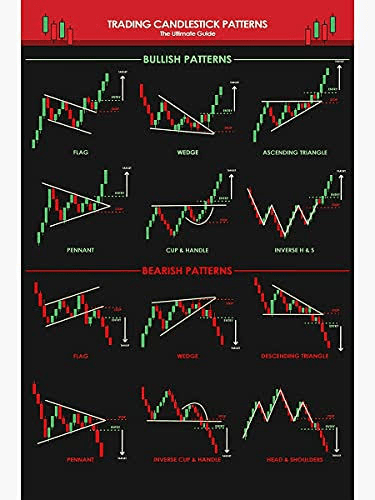Candlestick patterns are a popular tool used by traders to analyze price movements in financial markets, providing valuable insights into market sentiment and potential future trends. Originating from Japanese rice traders in the 18th century, candlestick charts have become a cornerstone of technical analysis, offering a visual representation of price action that can help traders make informed decisions. In this article, we delve into the world of candlestick patterns, exploring their significance, common patterns, and practical applications in trading strategies.
Understanding Candlestick Patterns:
At its core, a candlestick represents the price movement of an asset over a specific period, typically depicted as a vertical line known as the "wick" or "shadow," with a wider rectangular shape called the "body." The body's color (usually green or white for bullish candles and red or black for bearish candles) indicates whether the closing price was higher or lower than the opening price. Candlestick patterns emerge from the arrangement of multiple candles, conveying information about market psychology and potential trend reversals or continuations.
Common Candlestick Patterns:
Doji: A doji occurs when the opening and closing prices are virtually the same, resulting in a small or non-existent body with long wicks. It suggests indecision in the market and often precedes significant price movements.
Hammer and Hanging Man: Both patterns feature a small body and a long lower wick, with the former appearing at the bottom of a downtrend (bullish reversal) and the latter at the top of an uptrend (bearish reversal).
Engulfing Patterns: Bullish engulfing patterns occur when a larger bullish candle completely engulfs the previous bearish candle, signaling a potential reversal to the upside. Conversely, bearish engulfing patterns indicate a reversal to the downside.
Morning Star and Evening Star: These three-candlestick patterns signal potential trend reversals. The morning star appears during a downtrend, with a small-bodied candle sandwiched between a large bearish candle and a large bullish candle. The evening star, conversely, appears during an uptrend, signaling a potential reversal to the downside.
Practical Applications in Trading:
Candlestick patterns serve as valuable tools for traders across various timeframes, from short-term day traders to long-term investors. By identifying patterns and understanding their implications, traders can make informed decisions regarding entry and exit points, risk management, and overall trade strategy. For example, a day trader may utilize short-term candlestick patterns to identify intraday trading opportunities, while a swing trader may look for longer-term patterns to capture trends over several days or weeks.
It's important to note that while candlestick patterns can provide valuable insights, they should not be used in isolation. Successful trading requires a comprehensive approach that incorporates multiple indicators, risk management strategies, and market analysis techniques. Additionally, traders should consider the broader market context, news events, and macroeconomic factors when interpreting candlestick patterns and making trading decisions.

Conclusion:
Candlestick patterns offer a powerful framework for analyzing price movements and identifying potential trading opportunities in financial markets. By understanding the significance of common patterns and their implications, traders can gain a competitive edge and navigate volatile market conditions with confidence. However, it's essential to combine candlestick analysis with other technical and fundamental tools while maintaining a disciplined approach to risk management. With practice and experience, traders can harness the insights provided by candlestick patterns to enhance their trading strategies and achieve their financial goals.